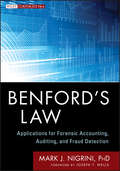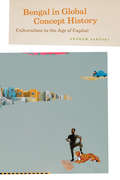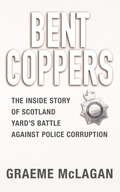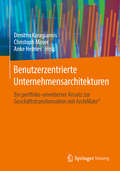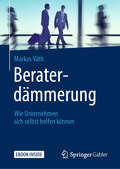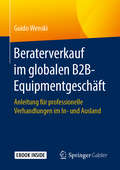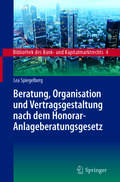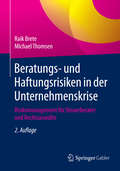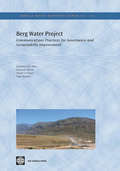- Table View
- List View
Benetton (A)
by James L. Heskett Sergio SignorelliThe world's largest manufacturer of woolen outerwear garments seeks to extend its retailing network to the United States from its base in Europe. A number of issues concerning marketing, manufacturing, and logistics strategy are raised by the proposed move along with specific questions about how the move should be managed. The case describes a well-thought-out, functionally integrated strategy for Europe in a way that allows assessment of its applicability for a proposed U.S. effort.
Benetton Group
by James L. HeskettThe management of the Benetton Group includes senior executives advocating two different strategies: 1) expanding manufacturing to develop economies in order to grow Benetton's sales in those markets, and/or, 2)find ways to provide additional support to retailers, some of whom are operating in developed markets against sophisticated competitors and are increasingly embattled. Includes color exhibits.
Benetton Group S.p.A., 2000
by John R. Wells Galen Danskin"In 2000, Benetton was one of the leading mass fashion competitors in the world with approximately $1.9 billion in sales across 5,500 stores in 120 countries. But the company's fortunes seemed to be on the wane. Operating profits had fallen 9% from the prior year to $299 million. Having almost matched global leader, Gap Inc.'s revenues in 1985, Benetton was now only one seventh of Gap's size. Moreover, Hennes & Mauritz (H&M) of Sweden had passed Benetton in 1996 and now claimed more than double the sales of Benetton. Inditex of Spain and Fast Retailing of Japan had also passed Benetton in revenues by 2000. To make things worse, Inditex and H&M had announced in 2000 that they intended to enter Italy, Benetton's heartland. Chairman and co-founder Luciano Benetton was determined to fight back and toward this end had just launched a major new retail strategy to expand the size of Benetton's current stores, invest in large superstores and build greater control of the supply chain. The company also had high hopes for its new drive into sports equipment and apparel. Would this be enough to halt the rise of its mass fashion competitors?"
Benetton Group S.p.A., 2012
by John R. Wells Galen Danskin"On May 31, 2012, after 36 years on the Milan Stock Exchange, Benetton was officially delisted and taken private by Edizione, the Benetton family's holding company. Since 2000, Benetton shareholders had seen its market value fall from $4.3 billion to $720 million at the end of 2011. At $2.6 billion, Benetton's sales in 2011 were virtually the same as they were in 2000, but Inditex from Spain, Hennes & Mauritz (H&M) from Sweden and Fast Retailing from Japan had all grown several times larger over the same period. What happened to this global retail giant? Under the direction of four different CEOs since 2000, Benetton had attempted to move from being an Italian supplier of knitwear with licensed small retailers throughout the world to a vertically integrated global player by tightening management over its supply chain and rolling out directly operated superstores. These moves helped Benetton gain more control over its operations, but they also ate into its profitability. In 2012, Benetton found itself competing with fashion giants who could respond faster to market trends and deliver comparable clothes at half the cost. With Benetton under private ownership, would Harvard Business School graduate Alessandro Benetton be able to make the changes required to return the company to its former strength?"
Benetton S.p.A.
by Howard H. Stevenson J. Carlos Jarillo Jon I. MartinezFocuses on the strategic/organizational development of Benetton. Examines the organizational structure which has allowed the company to expand into a world scale company from its small entrepreneurial base. Examines the functional strategies which have allowed a huge firm to succeed in a fashion business. Poses the question as to whether this same organization can be successful in the face of diversification.
Benford's Law and Macroeconomic Data Quality
by Gonzalo Pastor Jesus Gonzalez-GarciaA report from the International Monetary Fund.
Benford's Law: Applications for Forensic Accounting, Auditing, and Fraud Detection (Wiley Corporate F&A #616)
by Mark J. NigriniA powerful new tool for all forensic accountants, or anyone who analyzes data that may have been altered Benford's Law gives the expected patterns of the digits in the numbers in tabulated data such as town and city populations or Madoff's fictitious portfolio returns. Those digits, in unaltered data, will not occur in equal proportions; there is a large bias towards the lower digits, so much so that nearly one-half of all numbers are expected to start with the digits 1 or 2. These patterns were originally discovered by physicist Frank Benford in the early 1930s, and have since been found to apply to all tabulated data. Mark J. Nigrini has been a pioneer in applying Benford's Law to auditing and forensic accounting, even before his groundbreaking 1999 Journal of Accountancy article introducing this useful tool to the accounting world. In Benford's Law, Nigrini shows the widespread applicability of Benford's Law and its practical uses to detect fraud, errors, and other anomalies. Explores primary, associated, and advanced tests, all described with data sets that include corporate payments data and election data Includes ten fraud detection studies, including vendor fraud, payroll fraud, due diligence when purchasing a business, and tax evasion Covers financial statement fraud, with data from Enron, AIG, and companies that were the target of hedge fund short sales Looks at how to detect Ponzi schemes, including data on Madoff, Waxenberg, and more Examines many other applications, from the Clinton tax returns and the charitable gifts of Lehman Brothers to tax evasion and number invention Benford's Law has 250 figures and uses 50 interesting authentic and fraudulent real-world data sets to explain both theory and practice, and concludes with an agenda and directions for future research. The companion website adds additional information and resources.
Bengal Industries and the British Industrial Revolution (Routledge Explorations In Economic History Ser. #51)
by Indrajit RayThis book seeks to enlighten two grey areas of industrial historiography. Although Bengal industries were globally dominant on the eve of the industrial revolution, no detailed literature is available about their later course of development. A series of questions are involved in it. Did those industries decline during the spells of British industrial revolution? If yes, what were their reasons? If not, the general curiosity is: On which merits could those industries survive against the odds of the technological revolution? A thorough discussion on these issues also clears up another area of dispute relating to the occurrence of deindustrialization in Bengal, and the validity of two competing hypotheses on it, viz. i) the mainstream hypothesis of market failures, and ii) the neo-marxian hypothesis of imperialistic state interventions
Bengal in Global Concept History: Culturalism in the Age of Capital
by Andrew SartoriToday people all over the globe invoke the concept of culture to make sense of their world, their social interactions, and themselves. But how did the culture concept become so ubiquitous? In this ambitious study, Andrew Sartori closely examines the history of political and intellectual life in nineteenth- and twentieth-century Bengal to show how the concept can take on a life of its own in different contexts. Sartori weaves the narrative of Bengal's embrace of culturalism into a worldwide history of the concept, from its origins in eighteenth-century Germany, through its adoption in England in the early 1800s, to its appearance in distinct local guises across the non-Western world. The impetus for the concept's dissemination was capitalism, Sartori argues, as its spread across the globe initiated the need to celebrate the local and the communal. Therefore, Sartori concludes, the use of the culture concept in non-Western sites was driven not by slavish imitation of colonizing powers, but by the same problems that repeatedly followed the advance of modern capitalism. This remarkable interdisciplinary study will be of significant interest to historians and anthropologists, as well as scholars of South Asia and colonialism.
Beni Immobili: Manuale pratico di acquisto, vendita e amministrazione.
by Tony RuanoQuesto libro è stato qualificato da esperti e giornalisti come "La Bibbia dei beni immobili". Attentamente organizzato, questo libro tratta aspetti relativi a vendita, affitto, amministrazione, finanza, assicurazioni, imposte, associazioni di proprietari, aspetti legali di varia natura, includendo una profonda e dettagliata analisi sugli investimenti in beni immobili. Quello che vi viene offerto in questo libro, è una selezione dei migliori articoli pubblicati, nel corso degli anni, nei giornali: “Diario Las América” e “El Nuevo Herald”, entrambi di Miami, Florida, e “La Opinión”, di Los Ángeles, California. Sono stati trasmessi anche, in forma cibernetica, attraverso le pagine di Internet di “El Nuevo Herald”, “La Opinión” e il portale di “Univisión.com” Queste colonne furono scritte senza alcuna pretesa letteraria, in forma leggera e piacevole, con linguaggio semplice e comprensibile, come lo richiede la stampa; ma senza sacrificare il messaggio, il consiglio e l’insegnamento al lettore. I temi che contiene questa opera includono commenti riguardanti l’acquisto, la vendita e la locazione di proprietà; il finanziamento, le assicurazioni e imposte vincolate dei beni immobili. Versa, in oltre, sui temi come le associazioni di proprietari, gruppi abitativi, temi legali e tipici di varia indole, includendo una profonda e attenta analisi degli investimenti in proprietà immobiliari. Senza pretendere di essere una guida universale, l’insegnamento di questo libro, basato sull’esperienza accumulata durante gli anni, nell’esercizio quotidiano della professione, fornisce una linea guida per allontanarsi da errori costosi e offre al pubblico lettore un valido strumento, per essere utilizzato, ogni giorno, nel settore immobiliare. Utile, tanto per acquisire nuove conoscenze, come per riaffe
Benihana of Tokyo
by W. Earl Sasser Jr. John R. KlugDiscusses the development of a chain of "theme" restaurants. The student is asked to evaluate the current operating strategy and suggest a long-term expansion strategy.
Benin: Poverty Reduction Strategy Paper--Annual Progress Report
by International Monetary FundA report from the International Monetary Fund.
Benin: Second Poverty Reduction Strategy Paper--Joint Staff Advisory Note
by International Monetary FundA report from the International Monetary Fund.
Benjamin Franklin and the Invention of Microfinance (Financial History #14)
by Bruce H. YenawineIn life, Benjamin Franklin sought to manage debt, organize credit, build capital and promote virtue. After death, he continued this work by leaving a codicil to his last will and testament, bequeathing £2,000 to Boston and Philadelphia. This study examines Franklin’s codicil and the financial history of America over the 200 years since his death.
Bent Coppers
by Graeme McLaganThe inside story of a secret unit that has worked under cover to expose corruption in the Metropolitan Police since the early 1990s.'If you want a book that is genuinely 'unputdownable' read BENT COPPERS' Johnny Vaughan, THE SUN'A very engaging read - the outrageous nature of bent cops' behaviour guarantees that' SUNDAY TELEGRAPHShocked by the extent of corruption within its ranks, Scotland Yard set up a new anti-corruption unit in the early 1990s. Its members had to operate in conditions of unprecedented secrecy and they became known as the 'Ghost Squad'.Bent Coppers really did believe they were untouchable: they stole cash and property, fitted-up innocent people and sold secret information to cripple court cases. Many of the bent coppers are now in jail or awaiting trial but the battle against corruption is not over.Only now can the story of the 'Ghost Squad' be revealed. Award-winning BBC home affairs correspondent Graeme McLagan had followed the investigation since the beginning. He has interviewed undercover officers and many of the bent coppers they have exposed. this is the inside story of the 'Ghost Squad' and how it broke into the secret world of police corruption.
Benutzerzentrierte Unternehmensarchitekturen: Ein portfolio-orientierter Ansatz zur Geschäftstransformation mit ArchiMate®
by Dimitris Karagiannis Christoph Moser Anke HelmesUnternehmensarchitektur-Management unterstützt die Planung und Durchführung von Geschäftstransformation. Existierende Ansätze können in portfolio- und projekt-orientierte Ansätze eingeteilt werden. Die Synthese dieser Ansätze bietet das Beste aus beiden Welten. Das Buch stellt den kombinierten Ansatz vor. Der Inhalt gliedert sich in ausgewählte Best-Practice-Szenarien. Der Fokus liegt jeweils auf dem Thema Benutzererfahrung – ein Schwerpunkt, der in Transformationsprojekten oftmals vernachlässigt wird.Zur Evaluierung von Unternehmensarchitekturen aus Sicht der Benutzer steht unter ww.omilab.org/usercentricassessment ein Online-Service zur Verfügung.
Beowulf: An Adapted Classic
by Robert VandelThis classic series of plays, novels, and stories has been adapted, in a friendly format, for students reading at a various levels.<P> An excerpt from Beowulf: Out in the darkness, the monster stirred, gliding in shadow. Grendel moved quickly through the cloudy night, lurching up from the swampland. The warriors who were to guard the castle slept -- all but one. Beowulf, wakeful, was on watch for the demon. His anger mounting, he ached for revenge...
Beraterdämmerung: Wie Unternehmen sich selbst helfen können
by Markus VäthMarkus Väth zeigt auf, warum herkömmliche Unternehmensberatung keine Zukunft hat und wie Unternehmen sich durch die Anwendung einfacher Prinzipien selbst helfen können und zu Empowered Organizations werden. Parallel dazu formuliert der Autor eine Alternative zur klassischen Beratung: das Organisationscoaching. Organisationscoaches stehen dem Manager zur Seite und helfen dem Unternehmen, durch eine strukturierte Selbstreflexion kraftvoll aus sich selbst heraus zu lernen. Anwendungsnah und auf Basis seiner langjährigen Erfahrung schildert der Autor neue Denkanstöße und untermauert diese mit Erlebnissen aus dem Praxisalltag. Er überrascht mit Impulsen, von denen alle profitieren: Mitarbeiter und Manager, Unternehmen und auch Berater – durch die Förderung von Kooperation, Kreativität und Verantwortung.
Beraterverkauf im globalen B2B-Equipmentgeschäft: Anleitung für professionelle Verhandlungen im In- und Ausland
by Guido WenskiIn diesem Buch erfahren Vertriebsingenieure und Mitarbeiter im Investitionsgütervertrieb, wie sie in Verkaufsgesprächen erklärungsbedürfte Produkte erfolgreich platzieren können. Es geht um den praktischen Dialog mit dem Kunden und die Frage, wann ein eher kalkuliertes, rationales und wann ein eher intuitives Vorgehen zielführend ist. Sämtliche Verhandlungsschritte und viele konkrete Gesprächsdetails werden anhand von Beispielen sowie an einem realitätsnahen Verhandlungsfall anschaulich aufgezeigt. Darüber hinaus werden Unterschiede zwischen Gesprächssituationen mit Partnern aus dem In- und Ausland deutlich und das Verhandlungsverhalten einzelner Nationen genauer untersucht. Nicht nur Vertriebsingenieure, sondern auch Account Manager und Vertriebsleiter erhalten wertvolle Anregungen für komplexe Verhandlungen.
Beratung in der Finanzbranche: Wie sich der Vertrieb von Finanzprodukten zukunftsfähig macht (Fit for Future)
by Daniela LandgrafNichts ist so konstant, wie die Veränderung – das gilt schon seit vielen Jahren ganz besonders für den Finanzvertrieb. Fast jährlich kommen neue Regularien und Gesetze für die Finanzbranche heraus. Der Beruf der Finanz- , Vermögens- und FinanzierungsberaterInnen ist eine Tätigkeit, die ständige Weiterbildung erforderlich macht. Auch die Digitalisierung hat die Branche voll im Griff und Videoberatungen haben massiv an Bedeutung gewonnen. Doch die Branche hat auch ihre Probleme: Es fehlt an Nachwuchs, Frauen sind im Finanzvertrieb nach wie vor in der Minderzahl und die Konkurrenz durch Onlineportale ist groß.In diesem Buch werden Zukunftsszenarien für den Finanzvertrieb betrachtet und die LeserInnen erhalten wertvolle Tipps, um auch in Zukunft als VermittlerInnen und BeraterInnen Ihr Geld in der Branche verdienen zu können. Verschiedenste ExpertInnen kommen zu den drängendsten Fragen zu Wort: Wie wird sich die Finanzbranche in Zukunft weiter verändern? Was können VermittlerInnen und BeraterInnen jetzt schon tun, um weiterhin erfolgreich zu sein?
Beratung pädagogisch ermöglichen?!: Bedingungen der Gestaltung (selbst-)reflexiver Lern- und Bildungsprozesse (Lernweltforschung #33)
by Hannah Rosenberg Sascha Benedetti Sebastian LerchDer Band fokussiert das Phänomen Beratung in spezifischer Weise, nämlich als Ausgangspunkt für (selbst-)reflexives Lernen im Lebenslauf. Der Frage, wie Beratung (selbst-)reflexives und biografisches Lernen ermöglichen kann, wird aus verschiedenen Perspektiven nachgegangen, um der Komplexität von Beratungsprozessen gerecht zu werden.
Beratung und Consulting für Dummies (Für Dummies)
by Peter Economy Bob NelsonSie möchten Consultant werden oder sind es bereits? Bob Nelson und Peter Economy zeigen Ihnen, worauf Sie als Consultant achten sollten und wie Sie sich bei Ihren Kunden unentbehrlich machen. Die Autoren erklären ausführlich, wie Sie sich als Consultant selbstständig machen, welche Gesetze (Rechtsform des Unternehmens, Steuerrecht etc.) Sie dabei beachten müssen, wie Sie Angebote erstellen und Ihr Honorar festlegen. Erfahren Sie, wie Sie ein Consulting-Projekt bearbeiten: von der Problemanalyse über die Sammlung und Auswertung der relevanten Daten und Informationen bis hin zur Erarbeitung der Lösungsstrategie. Lassen Sie sich Tipps geben, wie Sie das Ergebnis beim Kunden kompetent präsentieren und wie Sie dafür sorgen können, dass der Kunde die vorgeschlagenen Lösungen auch in die Tat umsetzt. Und lassen Sie sich, last but not least, zeigen, wie Sie sich und Ihr Beratungsangebot richtig verkaufen und bewerben, Ihre Finanzen im Blick behalten und Ihr Ansehen als Consultant verbessern.
Beratung, Organisation und Vertragsgestaltung nach dem Honorar-Anlageberatungsgesetz (Bibliothek des Bank- und Kapitalmarktrechts #4)
by Lea SpiegelbergUnter Berücksichtigung der europäischen Vorgaben erläutert dieses Buch die Auswirkungen des Honorar-Anlageberatungsgesetzes auf die aufsichtsrechtlichen und zivilrechtlichen Anforderungen an eine ordnungsgemäße Honorar-Anlageberatung. Die europäische Finanzmarktrichtlinie MiFID II verfolgt unter anderem die Stärkung der unabhängigen Anlageberatung. Der deutsche Gesetzgeber hat bereits im Jahr 2014 darauf reagiert und das Honorar-Anlageberatungsgesetz verabschiedet, das zu einer Stärkung und Etablierung der unabhängigen Anlageberatung dienen soll. Denn die provisionsbasierte Anlageberatung hat in der Vergangenheit oft zu Falschberatungen der Anleger geführt. Vor diesem Hintergrund befasst sich das Buch ausführlich mit den neuen aufsichtsrechtlichen Anforderungen an die Honorar-Anlageberatung. Zudem werden die vertraglichen Pflichten der Parteien des Honorar-Anlageberatungsvertrages umfassend untersucht und die Ausgestaltungsmöglichkeiten des Honoraranspruches dargestellt.
Beratungs- und Haftungsrisiken in der Unternehmenskrise: Risikomanagement für Steuerberater und Rechtsanwälte
by Raik Brete Michael ThomsenDie Tätigkeit als Steuerberater oder Rechtsanwalt stellt hohe Anforderungen an den Berater und bringt erhebliche Pflichten mit sich. Daher ist das damit einhergehende Haftungspotenzial nicht zu unterschätzen, sowohl in der täglichen Beratung, als insbesondere auch im Krisenmandat. Dieser Leitfaden sensibilisiert den Berater für die Haftungsgefahren im Krisenmandat und zeigt Wege zur Risikominimierung auf. Die 2. Auflage berücksichtigt die jüngste BGH-Rechtsprechung und geht auf die gesteigerten Aufklärungs- und Hinweispflichten ein.
Berg Water Project: Communication Practices for Governance and Sustainability Improvement
by Lawrence J. M. HaasThe past decade has witnessed a major global shift in thinking about water, including the role that water infrastructure plays in sustainable development. This rethinking aims to balance better the social, economic, and environmental performance aspects in the development and management of large dams. Infrastructure strategies must complement strategies for water, environment, and energy security and for emerging concerns to reduce vulnerability in water resource systems to climate change on the horizon. Communication is central to multi-stakeholder dialogue and partnerships at all levels needed to achieve sustainability and governance reform in water resource management and infrastructure provision. At the same time, communication drives the advocacy to mobilize political will and public support for beneficial change and continuous improvement in practices. This case study emphasizes that is not only important to mobilize all opportunities to reconcile water demand and supply in river basins that are coming under increasing levels of water stress, but also to integrate effectively governance and anti-corruption reforms and sustainability improvements into all stages of the planning and project cycle-adding value for stakeholders.

